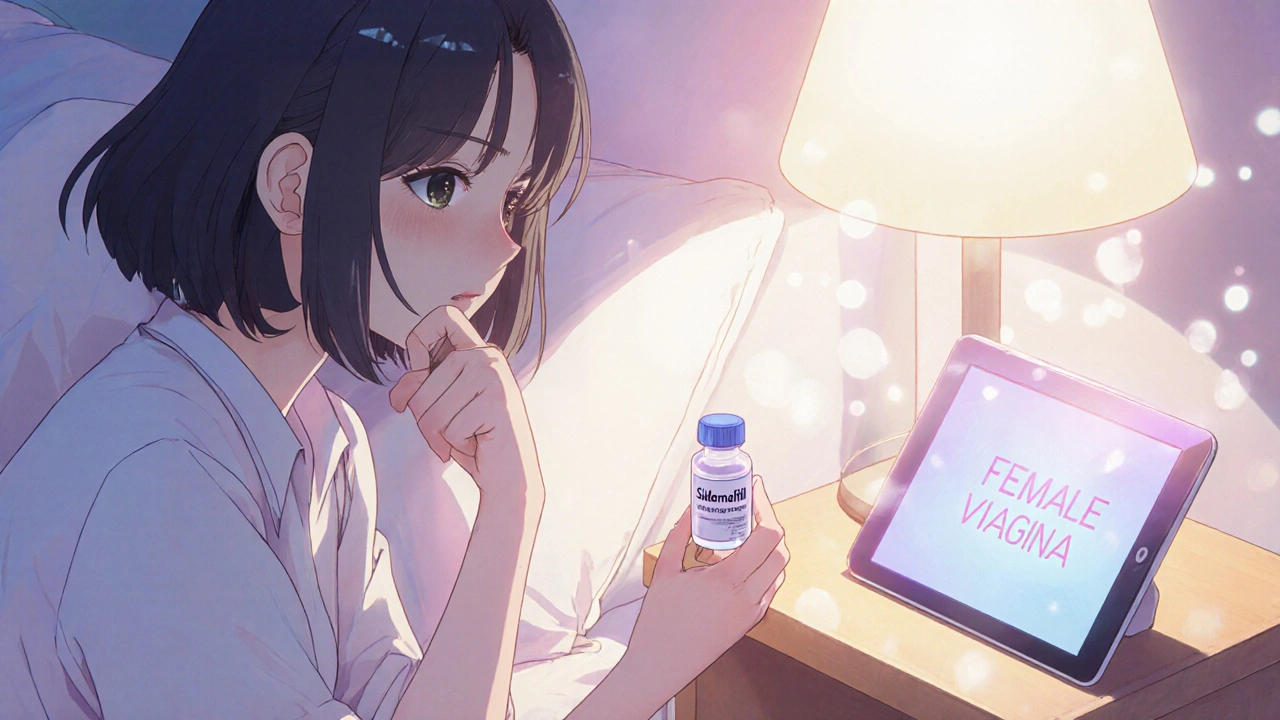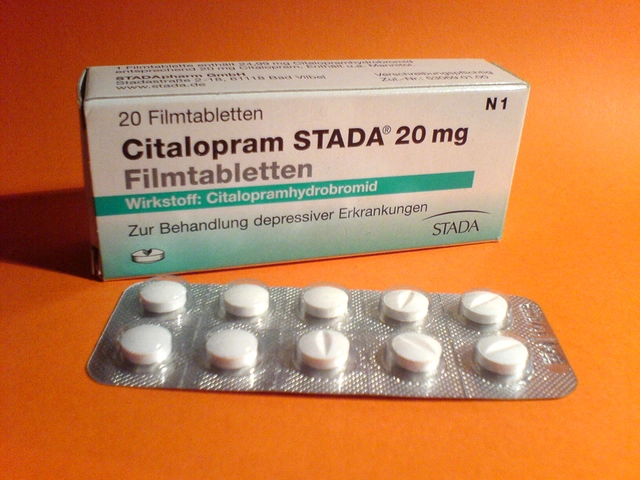Libido Booster Decision Tool
Find Your Best Libido Booster Match
Take this quick assessment to identify the most appropriate option based on your specific situation.
Your Situation
Your Recommended Options
When a woman feels her desire dimming, the search for a reliable boost often lands on the same headlines: female viagra. But the market now offers a handful of other options, and picking the right one can feel like a maze. This guide cuts through the noise, explains how each product works, and gives you a clear side‑by‑side view so you can decide what fits your body and lifestyle.
What is Female Viagra (Sildenafil)?
Sildenafil (Female Viagra) is a phosphodiesterase‑5 (PDE‑5) inhibitor originally developed for erectile dysfunction in men. It works by relaxing smooth muscle and increasing blood flow to the genital area. While it’s off‑label for women in many countries, clinicians prescribe it for female sexual arousal disorder (FSAD) when other treatments fail.
How does Sildenafil work for women?
In women, the same blood‑flow boost can heighten clitoral engorgement and vaginal lubrication. The drug reaches peak concentration in about an hour, and the effect can last 4‑6 hours. Research from a 2022 double‑blind trial showed roughly 30 % of participants reported a noticeable increase in desire after a single 50 mg dose, compared with 12 % on placebo. It’s not a hormone; it simply improves the physical response that can translate into a stronger mental feeling of arousal.
Top Alternatives to Female Viagra
Below are the most common non‑PDE‑5 options clinicians discuss. Each tackles a different piece of the desire puzzle-whether it’s the brain, the hormones, or overall health.
- Flibanserin - marketed as Addyi, a serotonin‑modulating pill taken daily. Works on the brain’s reward pathways.
- Bremelanotide - sold as Vyleesi, an injectable peptide that activates melanocortin receptors to boost sexual desire.
- Hormone therapy - estrogen or progesterone patches/creams that address low hormone levels after menopause.
- Testosterone cream - low‑dose topical testosterone can raise libido for some women.
- L‑arginine - an over‑the‑counter amino acid that may improve nitric‑oxide production and blood flow.
- Lifestyle changes - exercise, sleep hygiene, and stress reduction often restore natural desire.
- Psychotherapy - cognitive‑behavioral therapy (CBT) or sex therapy tackles anxiety, relationship issues, or past trauma.
- Pelvic floor exercises - Kegel routines improve muscular tone, which can enhance sensation.
Side‑by‑Side Comparison
| Attribute | Sildenafil (Female Viagra) | Flibanserin | Bremelanotide | Testosterone Cream | Hormone Therapy |
|---|---|---|---|---|---|
| Drug Class | PDE‑5 inhibitor | Serotonin‑modulating (5‑HT1A agonist) | Melanocortin receptor agonist | Androgen (topical) | Estrogen/progesterone (systemic or local) |
| Prescription? | Yes (off‑label in many regions) | Yes (U.S. FDA‑approved) | Yes (U.S. FDA‑approved) | Yes (compounded) | Yes (standard) |
| Typical Dose | 50‑100 mg as needed | 100 mg daily | 1.75 mg injection before intimacy | 0.5‑1 mg applied nightly | Varies; often 0.05‑0.1 mg/kg estrogen |
| Onset | ≈1 hour | 2‑4 weeks | 15‑30 minutes | Days to weeks | Weeks |
| Duration | 4‑6 hours | Continuous (daily) | 4‑6 hours | Variable, depends on skin absorption | Weeks to months |
| Common Side Effects | Headache, flushing, nasal congestion | Dizziness, nausea, insomnia | Injection site pain, nausea, flushing | Skin irritation, acne, hair growth | Breast tenderness, bloating, clot risk |
| Average Cost (U.S.) | $2‑$5 per tablet | $15‑$20 per day | $30‑$35 per dose | $30‑$45 per month (compounded) | $20‑$40 per month |
| Evidence of Efficacy | Modest (~30 % response in trials) | ~20‑30 % increase in desire scores | ~40 % reported improvement | Mixed; benefits more evident in low‑testosterone women | Strong for menopausal symptoms, variable for libido |
How to Pick the Right Option
Choosing isn’t about “which one is best” in generic terms. It’s about matching the drug’s strengths to your personal profile.
- Identify the root cause. Is the low desire linked to hormonal changes, blood‑flow issues, anxiety, or a combination? Blood‑flow blockers like sildenafil shine when vascular tone is the main hurdle.
- Check timing needs. If you want a pill you can take on the night of intimacy, sildenafil or bremelanotide work quickly. Daily pills like flibanserin need patience.
- Consider side‑effect tolerance. Headaches are common with sildenafil, while flibanserin can make you drowsy. If you’re sensitive to skin irritation, skip topical testosterone.
- Review cost and insurance. Some treatments (flibanserin, bremelanotide) are often out‑of‑pocket. Sildenafil may be cheaper if you can source a generic.
- Ask your clinician about contraindications. Women taking nitrates for heart conditions must avoid sildenafil. Hormone therapy isn’t advisable for those with a history of breast cancer.
Safety Tips and Common Pitfalls
Even though many of these options are available over the counter or via telehealth, safety still matters.
- Never mix nitrates with sildenafil. The combo can cause a dangerous drop in blood pressure.
- Start low, go slow. If you’re trial‑ing a new medication, begin with the lowest dose to gauge tolerance.
- Watch for interactions. Flibanserin interacts with alcohol; bremelanotide may affect blood pressure.
- Document changes. Keep a simple log of dose, timing, and any side effects. This helps your doctor fine‑tune the regimen.
- Don’t self‑diagnose. Low libido can be a symptom of depression, thyroid issues, or medication side effects. A full health check is a smart first step.
Quick Decision Checklist
Use this bite‑size list when you’re scrolling through options:
- Are you looking for on‑demand boost? → Sildenafil or Bremelanotide.
- Do you prefer a daily routine? → Flibanserin or Hormone Therapy.
- Is cost a major factor? → Generic Sildenafil is usually cheapest.
- Do you have cardiovascular meds? → Avoid Sildenafil, consider lifestyle changes.
- Any history of hormone‑sensitive cancers? → Skip estrogen‑based therapies.
Bottom Line: No One‑Size Answer
The truth is, female sexuality is multi‑dimensional. A drug that only increases blood flow won’t solve anxiety‑driven desire loss, but it can be a powerful piece in a broader plan that includes therapy, exercise, and possibly hormone tweaks. Talk openly with a clinician, try a short trial period, and keep track of how you feel. The right mix will feel like it’s supporting you, not forcing a change.
Is Sildenafil approved for women?
In most countries, sildenafil is not officially labeled for female sexual dysfunction, but doctors can prescribe it off‑label when they judge the benefit outweighs the risk.

How quickly does bremelanotide work?
Bremelanotide usually starts acting within 15‑30 minutes after the subcutaneous injection, making it one of the fastest options for on‑demand use.
Can I combine flibanserin with alcohol?
No. Alcohol can amplify flibanserin’s side effects like dizziness and low blood pressure, so it’s advised to avoid drinking while on the medication.
What lifestyle changes help boost libido?
Regular aerobic exercise, adequate sleep, stress‑management practices (like meditation or yoga), and a balanced diet rich in zinc and omega‑3s have all been linked to higher sexual desire.
Is testosterone cream safe for women?
When prescribed at low doses and monitored, topical testosterone can be safe, but long‑term data are limited. Regular blood tests are essential to avoid excess androgen effects.





Comments (10)